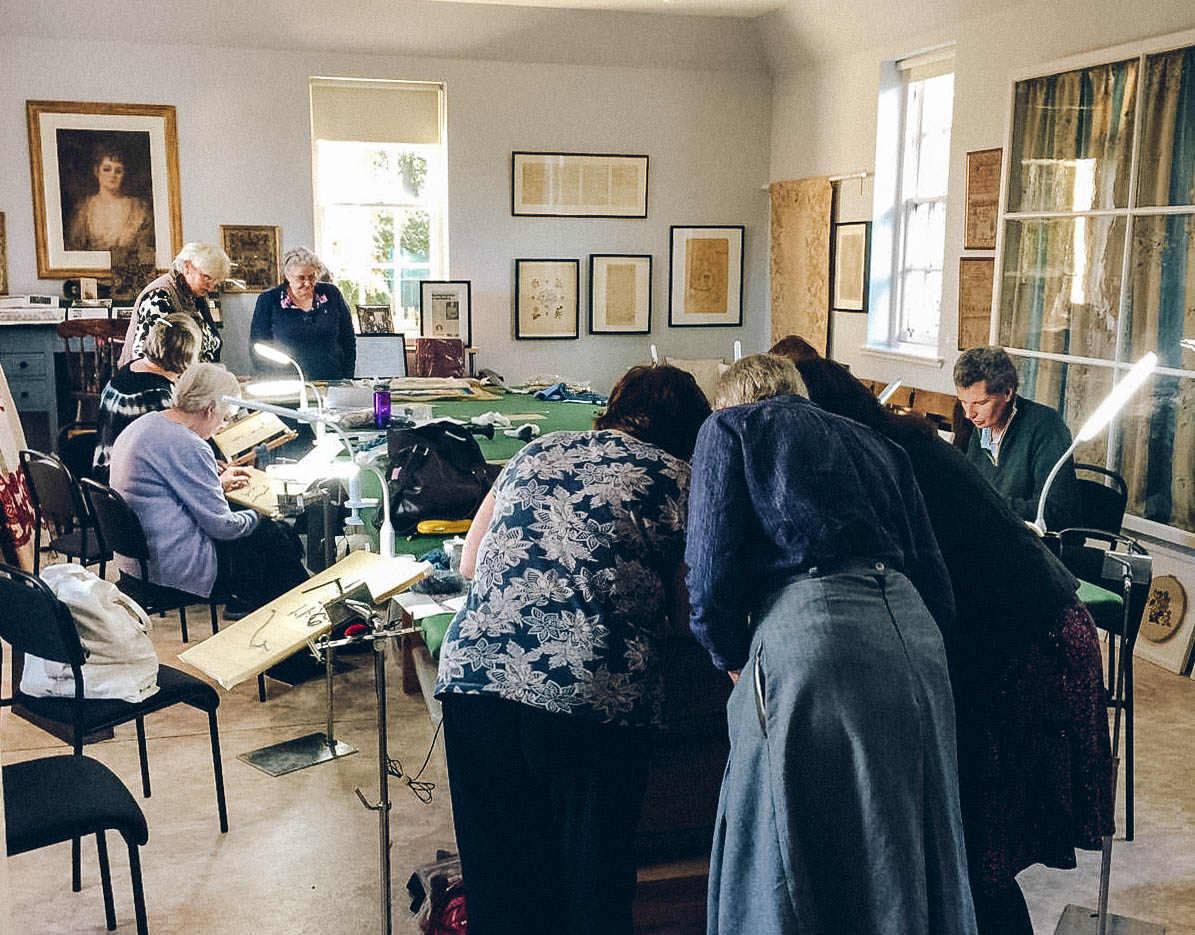Popular Craft and Hobby Activities
With the ever-increasing desire to learn and practice needlepoint techniques, the School has increased classes significantly to accommodate enthusiasts and beginners alike.
Needlepoint Class
We have just finished a one day needlepoint class using the distinctive design seen in work produced by Mary Queen of Scots and her companion Bess of Hardwick. Students chose the large wool kit (40cm or 16in on 13hpi canvas) or the small cotton kit (30cm or 12in on 18hpi canvas) to work on. Our kit design comes from various versions here at the school - from a very large scale example on paper to a stitched bag front in silks on very small gauge canvas. You can see part of the large paper design to the left of the open door in the photograph above left.
Needlepoint Kits
With all our kits there is always an intriguing story behind their origins or design and this maybe more so than some - a turbulent love story and murder mystery.
Mary Queen of Scots and Wemyss
The young Mary, aged 22, was tall, rich, powerful and famously beautiful. She was the reigning queen of Scotland, the dowager queen of France and the aspiring queen of England. On the lookout for a new husband and the need to produce an heir to secure her position as monarch of England and Scotland, her attentions were drawn to her Tutor cousin Henry Stuart, Lord Darnley.
Lord Darnley, a tempestuous character, met the young queen at Wemyss Castle and their fiery love affair ultimately landed her in one of histories greatest murder mysteries. When Queen Elizabeth I put Mary under house arrest and under the custody of Elizabeth Talbot, Countess of Shrewsbury, also known as ‘Bess of Hardwick and her husband the Earl of Shrewsbury, the bond of needlework helped both Mary and Bess to make the best of the 15 years of imprisonment.
They were skilful and accomplished needlewomen and it provided a form of therapy and communication for Mary. Bess and Mary would spend many hours stitching together and some of Mary’s needlework is still at Hardwick Hall.













